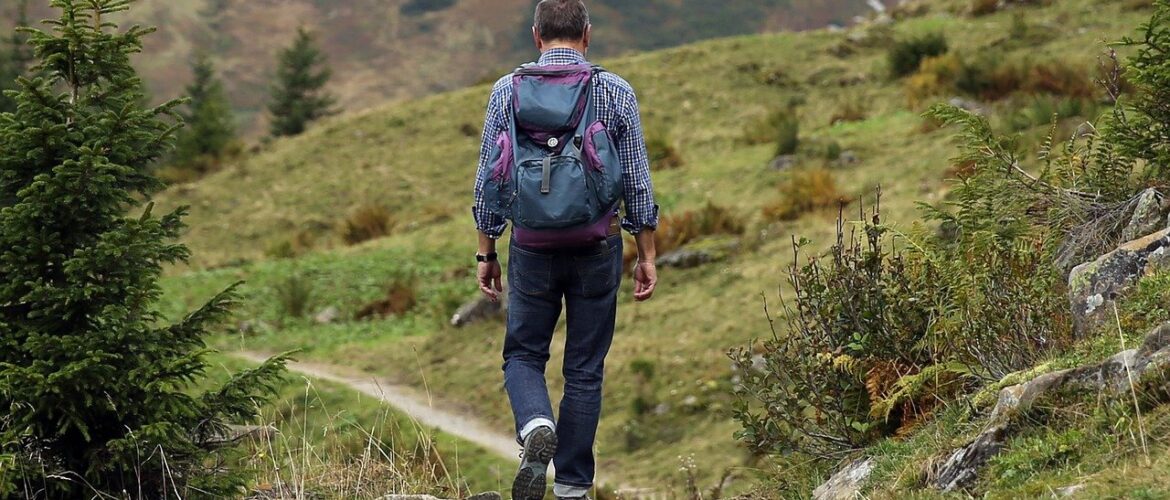Ensure You Are Properly Prepared When Walking and Hiking
Walking is a very effective form of exercise. From just walking around the neighbourhood for essential exercise during lockdowns or something more challenging such as a hike, walking can also be extremely enjoyable, especially when hiking in some of the beautiful areas the UK has to offer. But whether it’s a fairly short trip that might take an hour or a trek that will last all day, do ensure you are properly prepared when walking.
Before we move on, I have mentioned walking, hiking, and trekking. Really, all these terms are pretty much interchangeable. According to the dictionary:
Hiking is the activity of going for long walks, especially across countryside.
Trekking is going on a long arduous journey, typically on foot.
This article will explain a few effective ways of how to be prepared when walking – or trekking – or hiking!
Route Planning – and a mobile phone!
If you are going to set out on a long walk, particularly in unfamiliar territory, it is very important that you plan your route meticulously. Lots of hikers get themselves lost or injured by going off the beaten track and struggling to get back and getting totally disorientated.
Many people like pouring over an Ordnance Survey map to plan their route, but they are not always effective when you are walking.
As much as you want peace and quiet and to leave your tech equipment behind, it is advisable for safety reasons to have a mobile phone with you in case there is an unforeseen problem. Switch it off, tuck it away, and don’t be tempted to look at messages and social media, but knowing it is there provides reassurance. It is worth taking a solar power bank with you, ensuring it is fully charged of course, so you can top up your phone.
But another reason for taking your mobile phone is that there are many apps that you can use as an online mapping tool. The Guardian suggests five mapping aids to choose from including the Ordnance Survey app.
Waterproof Equipment
Even if you are going on a short walk, in the UK we often say we can have all four seasons of weather in a day. The sun might be shining when you start, but that could change pretty suddenly!
If you don’t want to get soaked, consider lightweight waterproof equipment will serve you well in any conditions,
Make sure that you don’t use insulated waterproof equipment in warmer weather as you will feel extremely uncomfortable, plus there will be a lot of extra bulk.
Are you fit enough?
Although walking is an excellent form of exercise, if you are going on long treks you really should ensure you are fit enough before you start.
There are lots of things to consider. A long but flat route may not be too troublesome, but if you are climbing steep hills, tackling rugged terrains, and climbing over styles, it’s a different matter. Getting halfway on a walking journey and not having the energy to complete the walk is not a position you want to find yourself in.
You don’t need to go to a gym to get fit. There are lots of exercise regimes you can adopt at home as well as increasing the intensity of your walks on a regular basis.
Travelling Light
If you are going to go out on a hike, then you need to travel light. While it is impossible to travel truly light, as in without a tent or sleep equipment, when you are going on a long-distance hike, you can still cut down on the number of things that you are carrying. In addition to reducing your load, try to invest in equipment that is lightweight, to ease the strain on your body. If you include strength training in your fitness aspirations, then you will be better able to manage and carry heavier loads.
Cooking Equipment
Cooking equipment such as a small pot and camping stove is very useful if you are taking your trekking up to a serious notch. If you are intending on foraging along the way, then portable cooking equipment gives you a guaranteed way of cooking your food. There are plenty of lightweight and affordable camping stove options to choose from.
Appropriate Footwear
You also need to ensure that you have appropriate footwear and that it is ‘worn in’ before embarking on a long trek. A blister could become infected or could stop you from being able to walk, which will delay your hike significantly.
There is a huge selection of walking shoes to choose from but do your research to ensure you have brought the right footwear for the terrain and anticipated weather conditions.
Bringing Supplies
Supplies are very important for long-distance hikes. You need to ensure that you have enough water, or alternatively, water purification equipment, such as chlorine tablets. Other supplies that you should bring include matches and a good quality Swiss army knife or similar. Also, ensure you have a small first aid kit and food supplies. Any supplies that you bring should be compact and able to fit in your backpack.
It is also advisable to bring a large stick or cane with you, to aid you in walking up hills or through rugged and rough terrain.
And don’t forget sunglasses, a cap, and sunscreen during the sunnier months!
Have fun, but do remember to ensure you are properly prepared when walking and hiking

